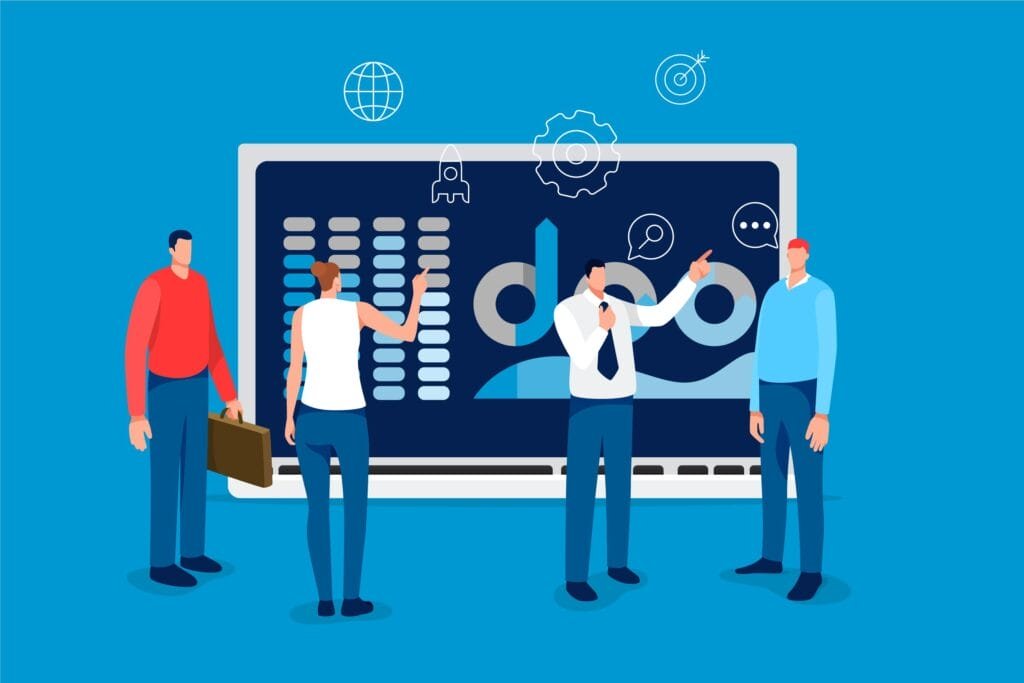SOC 2 Compliance Unleashed- Transformative Strategies for Change Management
In the rapidly changing field of cybersecurity and data protection, SOC 2 compliance has become a vital framework for businesses looking to protect their systems and keep their clients’ trust. However, attaining and preserving SOC 2 compliance isn’t a project that works for everyone. In the context of SOC 2 compliance, this paper explores the transformative techniques that businesses can implement for efficient SOC 2 change management.
Understanding SOC 2 Compliance
Definition and Scope of SOC 2 Compliance
The American Institute of Certified Public Accountants (AICPA) developed the Service Organization Control 2 (SOC 2) architecture to help service businesses manage and secure sensitive data. In contrast to SOC 1, which concentrates on financial reporting procedures, SOC 2 is intended especially for cloud computing and technology companies that manage client data.
For companies that handle and keep data, particularly private and sensitive data, SOC 2 compliance is essential. The main goal of the framework is to make sure that companies put in place efficient procedures to protect the security and privacy of the data they manage.
Key Principles of SOC 2
1. Security
Organizations are required under SOC 2’s security principle to have measures in place to prevent both logical and physical breaches. To identify and address possible security incidents involves putting firewalls, encryption, access controls, and monitoring systems into place.
2. Availability
The second principle, availability, requires businesses to ensure that their services and systems are accessible and functional when needed. To reduce downtime, this involves putting disaster recovery plans, redundancy, and other measures into practice.
3. Processing Integrity
Ensuring the validity, accuracy, and completeness of data processing is the main goal of processing integrity. Controls must be in place inside organizations to stop mistakes and unauthorized changes to data while it’s being processed.
4. Confidentiality
The goal of confidentiality is to prevent unwanted access to private information. Private as well as confidential data are included in this. Important elements of preserving confidentiality include data classification, access rules, and encryption.
5. Privacy
The privacy concept is based on handling personal data in compliance with applicable laws and the organization’s privacy notice. Organizations must set up policies and processes to deal with the gathering, utilizing, retaining, disclosing, and getting rid of personal data.
Challenges in SOC 2 Compliance

Perplexities Faced by Organizations
While achieving SOC 2 compliance is an excellent objective, there are challenges along the way. Businesses frequently struggle with a variety of confusion in figuring out the complexities of the compliance process.
1. Interpretation of Requirements
Interpreting SOC 2 criteria is one of the main sources of confusion. Organizations may become confused about the precise controls and procedures they must apply as a result of the technical and unclear language used in the framework.
2. Resource Allocation
Allocating resources is a typical difficulty that involves both budgetary and people considerations. Particularly small and medium-sized businesses might find it difficult to commit enough resources to the compliance process, which could make it more difficult for them to successfully satisfy SOC 2 criteria.
3. Evolving Regulatory Landscape
Cybersecurity and data protection have a constantly changing regulatory environment. Organizations may find it difficult to stay on top of regulatory changes and maintain continuous compliance, particularly when new laws are passed or old ones are changed.
Navigating Burstiness in Compliance Requirements
Organizations must manage the complexities brought about by compliance regulations while also navigating their inherent burstiness. Burstiness is the term used to describe how cybersecurity threats are unpredictable and how quickly businesses must adjust to new difficulties.
1. Timely Updates
Due to the sudden changes in compliance standards, businesses must remain alert and update their security measures on time. To counter new attacks, this entails maintaining software, firewalls, and other security systems updated.
2. Incident Response
Unexpected security events might happen at any time. Organizations must have strong incident response procedures in place to navigate burstiness and respond to security breaches quickly and efficiently.
3. Training and Awareness
The emergence of more complex cyber threats highlights the significance of ongoing staff education and awareness campaigns. Maintaining a proactive cybersecurity posture requires staff training on current threats and recommended practices.
4. Flexibility in Policies
In the face of burstiness, policies, and controls must be interpreted with flexibility. Adaptability is a key consideration in the design of compliance frameworks for organizations so that they can easily respond to changing regulations and growing risks.
Strategies for Effective Change Management
Identifying the Need for Change
An organization’s requirement for change in its current systems and procedures must be determined before delving into the specifics of SOC 2 change management. This involves carrying out an exhaustive evaluation of their data management and security conditions as of this moment. This phase’s essential actions include:
1. Risk Assessment
To find weak points and possible dangers to the organization’s information assets, do a thorough risk assessment. This involves evaluating the possibility and consequence of different risks and assisting in the prioritization of issues that demand urgent action.
2. Gap Analysis
Analyze any gaps by contrasting current procedures and controls with SOC 2 change management criteria. By highlighting the differences between the intended and actual compliance states, this technique assists businesses in developing successful change management strategies.
Creating a Change Management Plan
1. Assessing Current State
Organizations need to evaluate their present compliance status in light of the gaps that have been discovered. This involves being aware of the data protection regulations, personnel knowledge levels, and current security procedures. The foundation for developing a focused change management strategy is this assessment.
2. Setting Clear Objectives
Set measurable, specific objectives for SOC 2 change management. The main SOC 2 tenets—security, availability, processing integrity, confidentiality, and privacy—should be in line with these goals. Well-defined goals offer a path for executing essential modifications.
3. Communication Strategies
In change management, communication must be done effectively. Organizations should create communication plans that educate all parties involved employees, management, and outside vendors of the impending changes. Clear communication facilitates a mutual appreciation for the significance of SOC 2 compliance.
Implementing Changes
1. Technology Updates
A crucial component of SOC 2 compliance is the implementation of technology upgrades. This could entail using the latest encryption techniques, improving network security, and updating software. Updates to technology should take into account the security goals of the company and meet the requirements specified in the SOC 2 framework.
2. Process Reengineering
In addition to technology, companies may need to modify their current procedures to increase productivity and compliance. Revisions to incident response protocols, access controls, and data handling procedures may be necessary. Process reengineering makes sure that modifications are easily incorporated into regular business processes.
Integrating Change Management into SOC 2 Compliance
Aligning Change Management with SOC 2 Principles
Achieving effective change management requires more than just making discrete adjustments; it must be seamlessly integrated with SOC 2 change management fundamental ideas. Organizations looking to uphold compliance without sacrificing security and data integrity must make sure this alignment is created.
1. Security
Integrating new security measures without introducing vulnerabilities is necessary to align change management with the security principle. Identifying and mitigating such hazards may involve regular security audits, improved access controls, and real-time monitoring systems.
2. Availability
Services should continue to be available despite changes. To ensure continuous availability, organizations must plan and implement upgrades in a way that minimizes downtime, sometimes including redundancy and failover systems.
3. Processing Integrity
Organizations must ensure integration with processing integrity does not compromise the accuracy or completeness of data. Ensuring processing integrity during change implementation necessitates rigorous testing, validation procedures, and documentation.
4. Confidentiality
Confidentiality protection is crucial. Confidentiality measures should be strengthened rather than weakened by any changes. The organization’s dedication to protecting sensitive information should be reflected in the encryption techniques, access controls, and data classification.
Case Studies Showcasing Successful Integration
Case studies from the real world offer priceless insights into how businesses have effectively included change management in their SOC 2 compliance journey. These illustrations show how techniques can be used in real-world situations and provide a model for others to follow.
1. Company X: Seamless Technology Upgrade
Tech company Company X, which manages confidential customer data, has effectively incorporated a technological enhancement into its SOC 2 compliance plan. They increased processing integrity, improved security measures, and ensured continuous availability without sacrificing privacy or confidentiality by coordinating the upgrading with SOC 2 change management.
2. Organization Y: Employee Training Overhaul
Organization Y understood how crucial human interaction is to SOC 2 compliance. Their employee training programs were redesigned and brought into compliance with SOC 2 guidelines. This showed that good change management transcends technology by raising employee awareness and promoting a compliance culture.
Benefits of Effective Change Management in SOC 2 Compliance

Enhanced Security Measures
Security measures are significantly improved when SOC 2 compliance is achieved through the use of effective change management. Organizations may remain ahead of continuously changing cybersecurity risks by routinely evaluating and updating technology, access controls, and monitoring systems. By being proactive, the risk of unwanted access or data breaches is reduced and the security infrastructure is made strong.
Improved Operational Efficiency
When change management is smoothly incorporated into SOC 2 compliance, operational effectiveness is increased. An organizational structure that is more responsive and flexible is the result of improving employee training, modernizing technology, and streamlining procedures. This not only complies with SOC 2 guidelines but also makes it possible for businesses to run more smoothly, which reduces the risk of interruptions and downtime.
Positive Impact on Customer Trust
A crucial component of SOC 2 compliance, client trust is positively impacted by effective change management. Customers are more likely to trust a company when they believe it is actively working to protect the security and privacy of their data. A positive reputation in the eyes of clients is cultivated via consistent communication about changes, respect to privacy principles, and a dedication to confidentiality. This helps to build long-lasting partnerships.
Addressing Specific Compliance Challenges
Dealing with Data Privacy Concerns
SOC 2 compliance places a strong emphasis on data privacy, and protecting sensitive data is a problem that many businesses face. To remedy this, companies need to:
1. Data Encryption
Use strong encryption techniques to safeguard data both in transit and storage. This ensures that the data will remain secure and secret even in the event of illegal access.
2. Access Controls
To reduce the number of people who have access to sensitive information, improve access restrictions. This involves putting role-based access into practice as well as routinely checking and changing access permissions.
3. Data Retention Policies
Clearly define data retention guidelines to reduce the chance of retaining obsolete or superfluous information. This helps with compliance and improves the effectiveness of data management in general.
Ensuring Continuous Monitoring and Improvement
SOC 2 compliance requires constant attention and is not a one-time effort. To respond to changing risks and shifts in the business environment, organizations must ensure continuous evaluation and improvement. Among the methods for overcoming this obstacle are:
1. Automated Monitoring Systems
Put in place automatic monitoring programs that offer up-to-date information on security incidents. This enables companies to keep a proactive approach to cybersecurity and react quickly to possible problems.
2. Regular Audits and Assessments
Perform regular internal audits and evaluations to gauge how well the controls that are in place are working. This ongoing assessment makes sure that any flaws are found and fixed right away.
3. Incident Response Plans
To manage security events efficiently, have up-to-date incident response plans. This includes updates based on learning from past disasters, simulation exercises, and regular training for response teams.
The Human Aspect: Employee Involvement in Change Management
Employee Training and Awareness
Employees are essential to the achievement of SOC 2 compliance. The greatest regulations and technologies might not be sufficient if people are not properly trained and informed. Taking care of the human element involves:
1. Customized Training Programs
Provide specialized training courses that inform staff members on the significance of SOC 2 compliance, the particular adjustments being made, and their roles in the organization. Tailoring ensures that the instruction is relevant to the environment of the company.
2. Simulated Phishing Exercises
To evaluate and improve staff members’ phishing detection and prevention skills, conduct simulated phishing activities. This emphasizes the value of each person’s contribution to overall cybersecurity and fosters a culture of awareness.
Fostering a Culture of Compliance
Implementing technological or procedural changes is only one aspect of change management; another is fostering an organizational culture of compliance. This includes:
1. Leadership Buy-In
Make sure that initiatives about compliance are actively supported and participated in by organizational leadership. Buy-in from the top down highlights the significance of compliance and sets the tone for the entire organization.
2. Communication Channels
Provide methods of open and honest communication to employees so they can voice any worries or inquiries they may have about the changes. This reduces fears and promotes a feeling of collective accountability for upholding SOC 2 compliance.
3. Recognition and Rewards
Acknowledge and compensate staff members who make a proactive effort to uphold compliance. This could be accomplished through reward schemes, financial aid, or other strategies that support a positive outlook on tasks linked to compliance.
To build a workforce that is resilient and compliant, change management must take the human element into account. As we proceed, real-world case studies will highlight the significance of the human aspect in the larger context of change management by demonstrating how businesses have successfully included employees in their SOC 2 compliance journey.
Case Studies

Real-World Examples of Organizations Embracing Change for SOC 2 Compliance
Case studies from real-world situations provide helpful insights into how businesses have handled the challenges of SOC 2 compliance by using efficient change management. These illustrations present a range of strategies and methods, offering a concrete comprehension of the difficulties encountered and the solutions put in place.
1. Company Z: Seamless Integration of Technology and Process
Challenge: Aligning Company Z’s current technology and processes with SOC 2 criteria was a problem for this tech-driven organization.
Solution:
- Conducted a comprehensive risk assessment and gap analysis to identify areas for improvement.
- Implemented a phased approach to technology upgrades, ensuring minimal disruption to operations.
- Reengineered data handling processes, incorporating SOC 2 principles seamlessly.
Outcome:
- Enhanced security measures with minimal impact on day-to-day operations.
- Streamlined processes led to improved operational efficiency.
- Successful SOC 2 compliance certification.
2. Organization W: Employee-Centric Change Management
Challenge: Ensuring staff involvement was a problem for Organization W, as they realized the significance of the human element in SOC 2 compliance.
Solution:
- Customized training programs that were relevant to the organization’s industry and operations.
- Conducted simulated phishing exercises to enhance employees’ cybersecurity awareness.
- Focused on leadership buy-in, transparent communication, and employee recognition.
Outcome:
- Employees became proactive participants in maintaining compliance.
- A culture of compliance was fostered, reducing the risk of human-related security incidents.
- Positive employee feedback and a strengthened commitment to SOC 2 principles.
These case studies highlight the various strategies that businesses may use to deal with SOC 2 change management issues. Through the strategic use of technology, process reengineering, and human resource management, organizations may effectively negotiate the complex landscape of change management and attain SOC 2 compliance. We will examine potential future directions for SOC 2 compliance and dispel myths about this framework in the sections that follow.
Future Trends in SOC 2 Compliance
Emerging Technologies and Their Impact
The field of SOC 2 compliance is going to experience major shifts as technology advances. It is anticipated that emerging technologies will be essential to improving security protocols and simplifying compliance initiatives.
1. Artificial Intelligence (AI) and Machine Learning
The detection and prevention of cybersecurity risks can be revolutionized by integrating AI and machine learning into security systems. Large volumes of data may be analyzed in real-time by these technologies, which can spot trends and anomalies that human monitoring could overlook.
2. Automation of Compliance Processes
It is anticipated that automation will simplify compliance procedures and lessen the amount of manual labor needed for continuous reporting and monitoring. Automated technologies can assist firms in being proactive and ensuring that SOC 2 principles are followed by their systems more quickly and effectively.
Evolving Regulatory Landscape
The regulatory environment that controls cybersecurity and data protection is ever-changing. Companies can anticipate frequent updates and modifications to current regulations, which will impact how SOC 2 compliance is handled.
1. Global Harmonization of Standards
Global data protection standard harmonization initiatives could have an impact on soc 2 change management requirements. There may be a convergence of regulatory requirements for international companies operating abroad, which would ease their compliance operations.
2. Industry-Specific Regulations
More specialized laws tailored to their particular needs and difficulties may be introduced for some industries. Companies should keep up with advances in their business to make sure their compliance plans continue to match changing requirements.
Common Misconceptions about SOC 2 Compliance
Dispelling Myths and Clarifying Misconceptions
Even though SOC 2 compliance is becoming more and more important, there are several typical misconceptions that businesses could run across. dispelling these misunderstandings is crucial to ensuring a comprehension of the structure and steering clear of obstacles during the compliance process.
1. One-Time Compliance Effort
- Myth: Organizations can fulfill SOC 2 compliance requirements once and then forget about it.
- Reality: Maintaining SOC 2 compliance requires constant effort. To adjust to evolving threats, technology, and regulations, continuous surveillance, updates, and assessments are required.
2. All Cloud Service Providers (CSPs) Are SOC 2 Compliant
- Myth: SOC 2 compliance rules are automatically followed by all cloud service providers.
- Reality: The reality is that not all CSPs are SOC 2 compliant by default, even though many place a high priority on security. Companies need to be aware of their shared responsibility model and confirm that their CSP complies.
Organizations can approach SOC 2 compliance with greater clarity and ensure that their efforts are thorough, well-informed, and in line with the real purpose of the framework by clearing up these myths. In the last portions of this post, we’ll highlight the significance of proactive change management in the ever-changing SOC 2 compliance landscape and provide a summary of the main ideas.
Conclusion
In conclusion, SOC 2 compliance is a dynamic and ever-changing process that requires a proactive change management strategy. Organizations can unleash the transformative power of SOC 2 compliance, protecting their systems and upholding stakeholder trust, by understanding the differences, adopting practical strategies, and cultivating a compliance culture.
FAQs
A. What is the primary goal of SOC 2 compliance?
The primary goal of SOC 2 compliance is to ensure that organizations securely manage and protect sensitive information, meeting the criteria of the five key principles: Security, Availability, Processing Integrity, Confidentiality, and Privacy.
B. How often should organizations update their change management plan?
Change management plans should be regularly reviewed and updated, especially in response to changes in technology, regulations, or the organizational landscape. Regular assessments ensure the plan remains effective and aligned with evolving requirements.
C. Are there any industry-specific considerations for SOC 2 compliance?
Yes, industries may have specific challenges and requirements that influence their approach to SOC 2 compliance. Organizations should stay informed about industry-specific developments and tailor their compliance strategies accordingly.
D. How can organizations measure the effectiveness of their change management strategies in the context of SOC 2 compliance?
Effectiveness can be measured through key performance indicators (KPIs) such as the successful implementation of technology upgrades, improvements in security measures, and the level of employee engagement in compliance efforts. Regular assessments and feedback mechanisms also contribute to measuring effectiveness.







